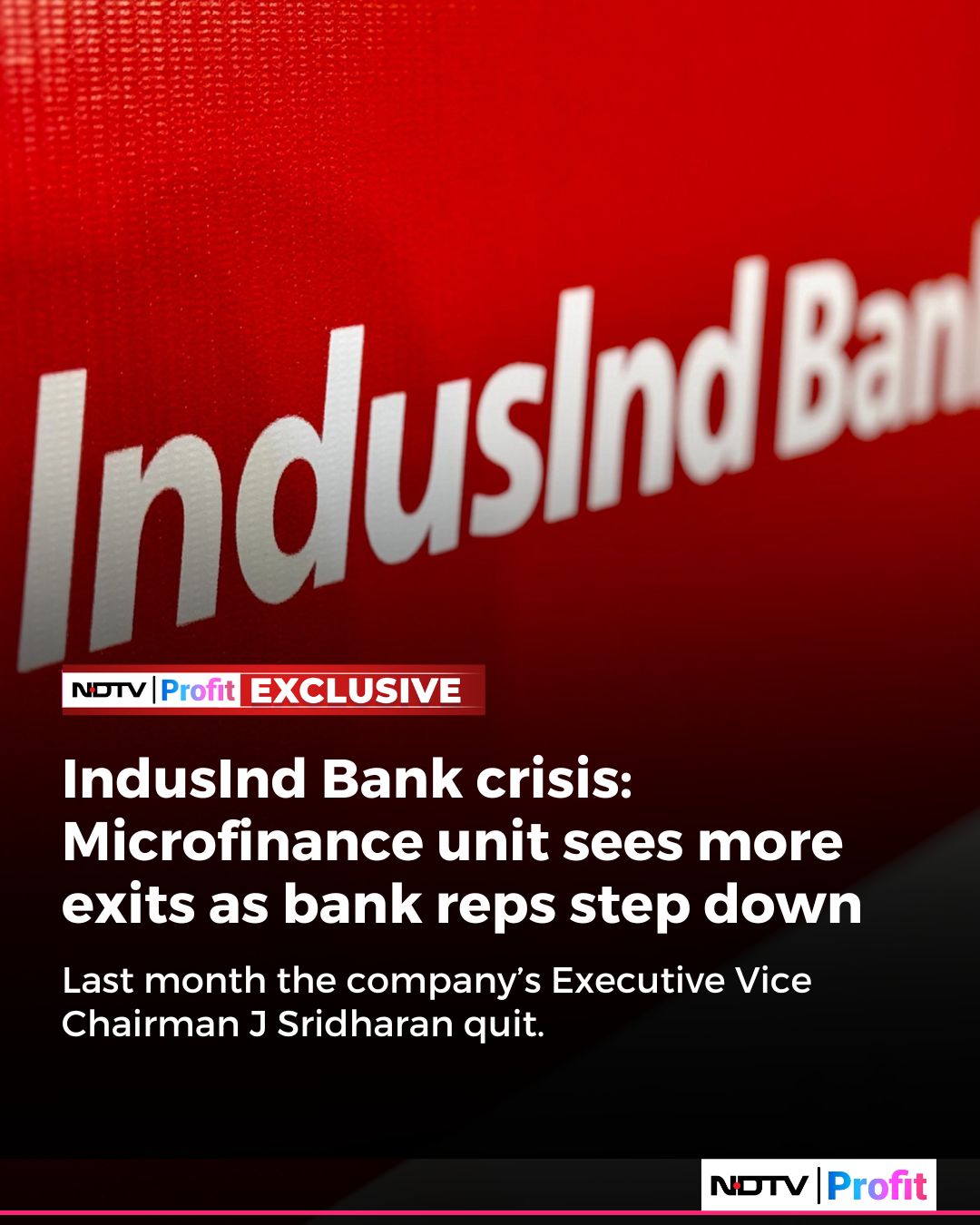IndusInd Bank Crisis: Microfinance Unit Sees More Exits As Bank Representatives Step Down — Profit Exclusive – NDTV Profit

IndusInd Bank: Financial Irregularities and Leadership Changes Amidst SDG Commitments
Background and Initial Incident
IndusInd Bank faced significant operational challenges following a faulty technology patch deployment that resulted in the unauthorized opening of 84,000 loan accounts without proper customer consent. Although the bank initially denied allegations related to this incident, it acknowledged the technical fault. An audit was conducted subsequently; however, it did not yield any conclusive outcomes.
Microfinance Loan Portfolio and Asset Quality
- As of March 2025, IndusInd Bank reported a microfinance loan portfolio valued at Rs 30,909 crore, representing 9% of its total loan book.
- Gross non-performing assets (NPAs) within this segment stood at Rs 4,531 crore, accounting for 13.18% of the microfinance portfolio.
- This marked a significant increase from the previous quarter (October-December), where NPAs were Rs 2,432 crore or 7.05%.
Leadership Resignations and Derivative Accounting Issues
- In late April 2025, the Managing Director and CEO, Sumant Kathpalia, resigned on April 29, followed by his deputy, Arun Khurana, who resigned a day earlier.
- The resignations were linked to an audit conducted by consultancy firm Grant Thornton Bharat, focusing on derivative accounting irregularities.
- The bank had disclosed on March 10 that issues in its derivatives accounting had caused a financial loss of approximately Rs 2,000 crore.
Regulatory Investigation and Insider Trading Allegations
An interim investigation by the Securities and Exchanges Board of India (SEBI) revealed that both Kathpalia and Khurana were aware of the derivative accounting problems as early as December 2023. By February 2024, they understood the financial impact but failed to inform shareholders. Instead, they sold their shares in the market, prompting ongoing investigations into potential insider trading violations and other related issues.
Emphasis on Sustainable Development Goals (SDGs)
SDG 8: Decent Work and Economic Growth
- IndusInd Bank’s microfinance operations contribute to financial inclusion, supporting small entrepreneurs and promoting sustained economic growth.
- However, the rise in non-performing assets threatens the stability and sustainability of these financial services, potentially impacting livelihoods.
SDG 16: Peace, Justice, and Strong Institutions
- The bank’s governance challenges, including accounting irregularities and insider trading allegations, highlight the need for transparency and accountability in financial institutions.
- Strengthening institutional frameworks is critical to restoring trust and ensuring ethical business practices aligned with SDG 16.
SDG 9: Industry, Innovation, and Infrastructure
- The incident involving a faulty technology patch underscores the importance of robust technological infrastructure and innovation in banking.
- Investing in secure and reliable IT systems is essential to prevent operational failures and protect customer interests.
SDG 10: Reduced Inequalities
- Microfinance services are instrumental in reducing inequalities by providing access to credit for underserved populations.
- Ensuring the integrity and sustainability of these services is vital to maintaining equitable financial opportunities.
Conclusion
IndusInd Bank’s recent challenges reflect critical issues in governance, operational integrity, and financial management. Addressing these concerns is imperative not only for the bank’s recovery but also for advancing multiple Sustainable Development Goals, particularly those related to economic growth, institutional strength, innovation, and reducing inequalities. Enhanced transparency, ethical leadership, and technological resilience will be key to aligning the bank’s operations with global sustainability commitments.
1. Sustainable Development Goals (SDGs) Addressed or Connected
- SDG 8: Decent Work and Economic Growth
- The article discusses financial irregularities, insider trading, and governance issues within a bank, which relate to promoting sustained, inclusive, and sustainable economic growth, full and productive employment, and decent work for all.
- SDG 16: Peace, Justice, and Strong Institutions
- The issues of audit failures, lack of transparency, insider trading, and corporate governance lapses connect directly to building effective, accountable, and transparent institutions.
- SDG 9: Industry, Innovation, and Infrastructure
- The mention of a faulty tech patch deployment causing unauthorized loan accounts relates to the promotion of sustainable industrialization and fostering innovation, including reliable infrastructure and technology management.
2. Specific Targets Under Those SDGs
- SDG 8 Targets
- Target 8.3: Promote development-oriented policies that support productive activities, decent job creation, entrepreneurship, creativity, and innovation.
- Target 8.10: Strengthen the capacity of domestic financial institutions to encourage and expand access to banking, insurance, and financial services for all.
- SDG 16 Targets
- Target 16.5: Substantially reduce corruption and bribery in all their forms.
- Target 16.6: Develop effective, accountable, and transparent institutions at all levels.
- Target 16.10: Ensure public access to information and protect fundamental freedoms.
- SDG 9 Targets
- Target 9.5: Enhance scientific research, upgrade technological capabilities of industrial sectors, including financial technology.
3. Indicators Mentioned or Implied to Measure Progress
- For SDG 8
- Gross Non-Performing Assets (NPA) ratio in microfinance loans (13.18% as of March 2025) indicates financial sector health and stability.
- Volume and value of microfinance loans (Rs 30,909 crore) reflect access to financial services.
- For SDG 16
- Number and outcomes of audits and investigations (e.g., Grant Thornton Bharat audit, SEBI investigation) reflect institutional accountability and transparency.
- Incidents of insider trading and regulatory actions measure corruption levels and enforcement effectiveness.
- For SDG 9
- Incidence of technology failures (faulty tech patch deployment) as a measure of technological robustness and innovation management.
4. Table: SDGs, Targets and Indicators
| SDGs | Targets | Indicators |
|---|---|---|
| SDG 8: Decent Work and Economic Growth |
|
|
| SDG 16: Peace, Justice, and Strong Institutions |
|
|
| SDG 9: Industry, Innovation, and Infrastructure |
|
|
Source: ndtvprofit.com








